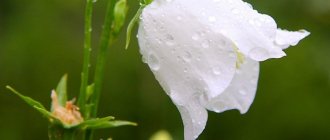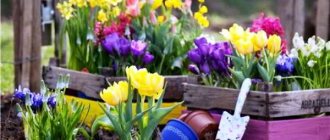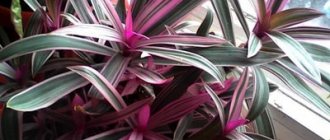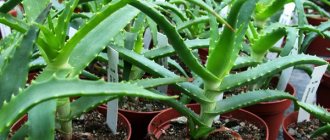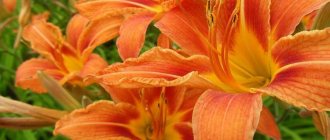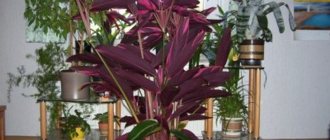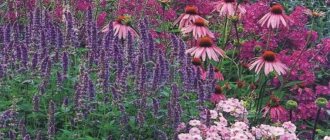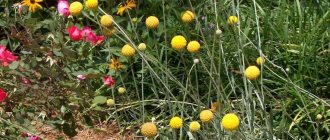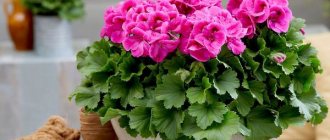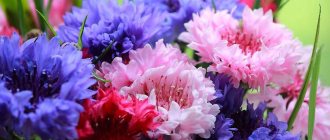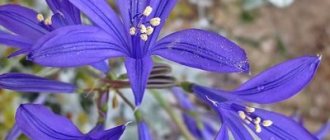Garden flowers perennials
Popular crops that can be found in almost all flower beds and gardens allow you to create a landscape design that will last for many years. In most cases, the most beautiful garden flowers, perennials, are easy to care for and resistant to low temperatures. There are plants that bloom in early spring, and there are those that will delight throughout the summer.
Early garden flowers perennials
If you want to enjoy flowers as the first warm days appear, plant bulbous plants such as snowdrops, crocuses, muscari or reticulated irises. In addition, there are other perennial early garden flowers:
- Hellebore.
It amazes with its variety of colors and early flowering. It is better to plant in spring, but in warm regions it can also be planted in autumn. The perennial flower is easy to care for and resistant to disease.
- Primrose.
Flowering can be observed already at the end of March, and it is abundant, and with proper care at the end of summer, the plant will delight you with the appearance of buds again. Can be grown in plots and in pots. They tolerate transplantation well.
- Periwinkle.
A perennial plant that retains green foliage even under snow, and flowers appear in April. They differ in color, and there are even terry specimens. They like moderately moist soil and shaded places.
Unpretentious garden flowers perennials
Many people plant crops to decorate their garden that do not require excessive care. There are excellent perennial garden flowers that do not require care:
- Lupine.
This plant is popularly considered a weed, but it is also very beautiful. Soil and special care are not important for him. It is better to plant a flower on the sunny side. If you cut off the faded “candles”, flowering will occur again.
- Garden chamomile.
A perennial flower that will decorate any flower bed. It will delight you with flowering for a long time, and it lasts for a long time when cut. Watering and fertilizing are carried out in the usual ways, without special conditions.
- Phloxes.
There is a wide range of colors and even “chameleons” that change the light according to the lighting. These perennial garden flowers can grow for up to eight years without care, but when the flowers begin to get smaller, you should fertilize them with organic matter.
Long-blooming perennial garden flowers
When thinking about decorating a site, many gardeners prefer to choose crops that can bloom for a long time. To their delight, there are many such plants, and here are popular perennial garden flowers that bloom all summer:
- Pansies.
If you plant summer varieties, you will be able to see bright colorful flowers until late autumn. It is worth noting resistance to heat and ease of care.
- Astilbe. This perennial garden flower is beautiful not only during flowering, but also before and after it. An excellent option for a rock garden. Loves partial shade, but is not fussy about care. The colors are very varied.
- Dianthus grass.
It grows in creeping bushes that can cover a large area. The flowers are small red. Flowering occurs from July to September.
- Large-flowered flax.
Popular species with red flowers. Although they live for one day, they change to new buds and this continues all summer and until October. Flax is fastidious, grows in any soil and tolerates drought well.
Garden shade-loving perennial flowers
Some crops do not grow well in the shade, and there are those that only need such conditions. Among those that do not bloom, the ideal option is hosta. There are other garden perennial flowers for shady places:
- Dicentra.
One of the most beautiful and original flowers that are easy to care for. It is important to plant in well-drained soil. Interestingly, the more shade there is on the site, the longer the flowering will continue.
- Forest bell.
These perennial garden flowers are used for flower beds, edgings and for decorating areas under trees.
- Badan.
Perennial plants have beautiful pink flowers that can decorate the site. Interestingly, after the snow melts, the leaves of this crop are healing.
Garden perennial flowers vines
You can decorate your site and buildings with the help of beautiful vines, among which are such popular flowers.
- Climbing rose.
The plant boasts long flowering, and the buds bloom only once. These perennial garden liana flowers love the sun, and in winter it is recommended to wrap them up.
- Ivy.
An unpretentious crop that can be grown even in Siberia. Dense foliage creates good shade, for which the branches should be tied in the right direction.
- Honeysuckle.
Some species of these plants have flowers and original foliage. At night, the open buds emit a pleasant aroma. For good flowering, it is better to plant in sandy and loamy soils. It is recommended to cover in winter.
Perennial garden tuberous flowers
A popular group of plants that are highly decorative, but they will have to be looked after. Common tuberous garden flowers:
- Corydalis.
The most popular species is the crested hollow. The bushes grow from 10 to 30 cm, and it is better to place them in shady places with loose forest soil.
- Gladiolus.
These are corms, presented in 200 species. They are distinguished by an erect stem with inflorescences and spikelets. These garden flowers come in different colors and may differ in flowering time and flower size.
- Crocosmia.
The bushes reach a height of 50-60 cm, and they should be planted in sunny areas protected from the wind. The soil should be rich and well-drained. In winter it needs to be covered.
Perennial bulbous garden flowers
This group contains interesting and beautiful plants that will delight you with their beautiful flowering. In most cases they are early. The most popular bulbous garden flowers perennials:
- Snowdrop.
The culture loves sunny places, but it is not picky about the soil. Flowering is observed throughout the month, but the bulbs should be planted in the fall.
- Crocuses.
Another common name is saffron. These perennial garden flowers come in different colors: yellow, purple, white, lilac and so on. Planting is carried out in the fall, and flowering occurs, like snowdrops, in March.
- Hyacinths.
The plants are known for their large inflorescences, which can be of different colors, for example, white, pink, burgundy, blue and so on. It is better to plant in shaded and protected places from the wind. Hyacinth does not like excessive moisture.
- Common bulbous flowers that are perennials include muscari, daffodils, reticulated iris and scillas.
The most beautiful perennial garden flowers
It is impossible to definitively answer which crops are the most beautiful, since everyone has their own taste. Therefore, in addition to the options described above, you can also offer these most beautiful garden flowers:
- Rose.
According to reviews, this is the most beautiful plant, which is presented in a wide range of colors. By selecting different varieties, you can get a flowerbed that will bloom throughout the summer and half of the fall.
- Lily.
A flower that can become a decoration for a flower bed, thanks to its large and colorful buds. It does not require maintenance and is resistant to pests.
- Peony.
Bushes with large and fragrant buds will decorate the area. This crop does not require special care. Peonies are easy to propagate.
Rules for caring for indoor begonia
“Due to its tropical origin, the level of air humidity is important for indoor begonia.”
The plant for growing indoors is undemanding and requires almost no care. Grows well at moderate air temperatures. It does not need to be replanted often. The only thing is that, due to its tropical origin, the level of air humidity is important to it. Some types of indoor begonia require a period of rest after the flowering period.
Proper lighting and watering regime
A room with good lighting is optimal for keeping begonias. For varieties that bloom profusely, diffused light is desirable, while moderate lighting is suitable for decorative deciduous varieties.
A room with good lighting is suitable for begonias.
It is best to place a container with begonia on the windowsill of a window facing west or east. In the cold season, when daylight hours are shortened, it is advisable to illuminate the perennial.
This plant loves moisture, so it needs frequent watering. You can only use soft, pre-settled water.
The excess accumulated in the pan is drained in a timely manner.
Watering rules:
- in the fall, from October, the flower is watered when the top layer of soil begins to dry out;
- in winter it is reduced to a minimum;
- with the arrival of the first spring month, they begin to moisten the soil more abundantly;
- In summer, the soil is moistened 2 times a week, in hot weather - daily.
Begonia needs frequent watering
Tuberous varieties of this perennial go dormant during the cold season. During this time they are placed in peat and not watered.
Air humidity
Due to its tropical origin, the plant requires high air humidity. It is prohibited to use the usual method for it - spraying it with a spray bottle, as this can lead to various diseases and the formation of spots on its leaves.
Experienced gardeners organize the optimal microclimate for the perennial by placing the pot on a saucer with wet peat poured into it. Another equally effective way is to pour pebbles into a container, fill the bottom with water and place the pot on the pebbles. The liquid that evaporates will create the necessary conditions.
Place pebbles in a container to moisten your begonia.
Recommended air temperature
Begonia does not withstand sudden changes in temperature, but feels good in moderate temperatures. In summer, it is best to keep the pot in a room with a temperature of 18 - 20°C; in winter, you need to make sure that the room is at least 15°C.
Soil and fertilizers
The plant develops well only in nutritious soil. To do this, take 1 part of chernozem and peat with two parts of leaf humus.
The bottom of the pot is covered with coarse river sand, then half filled with leaf humus. Black soil mixed with peat is poured into the remaining space.
Begonia needs to be fed regularly
In order for the plant to bloom and be beautiful, it is necessary to feed it. This is done 1 - 2 times a month, from the moment the buds form and until the end of flowering (spring - summer). You can feed begonia with mineral fertilizers.
Transfer rules
It is recommended to replant the plant once every 2–3 years, in the spring. To understand whether the begonia needs to be replanted, you should inspect the soil. If you can see roots from it that no longer fit in the pot, it’s time to replant.
The new container for the flower should be approximately 3 cm larger than the diameter of the old pot.
Carefully remove the plant and thoroughly clean the roots from the soil.
Carefully remove the plant from the pot
Dilute a weak solution of manganese and place the flower in it. After an hour, they take it out and carefully inspect the roots - there should be no damage or rotting areas on them. If there are any, they are removed.
The prepared pot of larger diameter is filled with a layer of expanded clay, and coarse sand is poured on top. Place the plant in a container, then fill the free space with soil, acting carefully so as not to damage the root system. Then water abundantly, do this regularly after transplantation.
Transplant into a larger pot
Tuberous flowers
Tubers are shortened, modified underground shoots that acquire a conditionally spherical shape as a result of the growth of internodes. Tubers are usually formed at the ends of the lateral shoots of the rhizome - stolons. The tubers of some plants are edible, such as Jerusalem artichoke or potatoes.
Among the tuberous plants, the majority are herbaceous perennials, the ground part of which completely dies at the end of the season, but emerges from the growing point in the spring. During the season, the plant forms many tubers, so these crops have no problems with vegetative propagation. In cool climates, tubers overwintering in the ground need to be well covered, but if the winters in your area are really harsh, then it is better to dig up the underground part of the plant for the winter.
Among the decorative tuberous crops, gloriosa, sinningia, tuberose, caladium, smithiana, herbaceous peony, canna, anemone, begonia, diplodenia, delphinium, gesneria, dahlia, cyclamen, freesia and arrowroot are widely popular.
Tuberous plants do not tolerate acidic and too dense soils and require balanced watering. Before planting tubers, the area is fertilized with organic matter, and sand is placed in each hole for drainage.
Anemones - planting and care in the garden
Author: Marina Chaika February 27, 2022 Garden plants
It doesn’t matter how your love for anemones began - from a gifted bouquet or admiring a neighbor’s flowerbed - this flower knows how to make you fall in love with it at first sight!
So that your passion for this bright beauty does not turn into a dreary burden, be sure to familiarize yourself with the requirements of this flower sissy for care, watering, soil, lighting and delicacies... Are you hungry yet? Then catch the first life hack on anemones: the capriciousness of this flower depends... on the variety! If you are not yet ready to pay a lot of attention to the flower you like, just choose a “more accommodating” anemone.
How not to get lost in the fascinating, but such a huge (today there are about 160 species!) assortment of anemones? How to choose an unpretentious or, on the contrary, the most “complex” anemone? How not to confuse the summer anemone with the autumn one, and even less fuss with the mandatory annual freezing of seeds - we’ll tell you right now.
Dahlias: growing from seeds and tubers
Author: Marina Chaika February 18, 2022 Garden plants
Did you know that 90% of your success in growing dahlias in full bloom depends on how you... store them?
In second place is the right soil. Gardeners look for signs of disease or pests, but the most common cause of death of first or transplanted dahlias is unsuitable soil. Yes, dahlias can heroically withstand changes in acidity, but good soil permeability is vital for this plant. If the site you have chosen cannot boast of such, this can be easily corrected. When digging the soil in the autumn, add a little ash, peat, humus, sand to the soil, and add chopped straw.
It will also be useful to spread straws in the spring, after planting the tubers. It will help retain precious moisture and save you from unnecessary work on loosening the soil.
Read more tips and secrets for growing your favorite dahlias in our article.
Irises: growing in open ground
Author: Marina Chaika February 27, 2022 Garden plants
Iris means “rainbow” in Greek. Today this rainbow has more than 700 shades and 35 thousand varieties! But it’s not just the colorful and delicate colors of the cockerels that captivated us: perfumers all over the world value irises for their unique bright aroma.
Did you know that bearded irises are more drought tolerant than their beardless counterparts? That the orris root popular among traditional healers, confectioners and perfumers is actually the root of irises?
We will tell you about these and other secrets of iris in our article.
Why do some irises have no scent? How to save iris from slugs without using chemicals? Do irises need to be covered for the winter? How to prune iris bushes correctly and beautifully after flowering? Why don’t cockerels want to bloom even on “ideal” soil and watering?
Begonia
Tuberous begonias are universal plants: they are used in flower beds and garden beds, grown in pots and containers, and hanging varieties are planted in hanging baskets and balcony boxes. And of course, they decorate the window sills with these flowers.
Begonias have an incredible variety of varieties, each of which is good in its own way. The shape of the flowers (simple, double, fringed), their size, and color can be different. The flowers of tuberous begonias are painted in bright, juicy, pure colors: white, yellow, red, orange, pink; flowering is abundant and long lasting. Ampelous varieties are very interesting - this is a real cascade of double and semi-double flowers.
How to grow
Dormant tubers need to be “awakened” - to do this, they are placed in a loose, moist substrate, without being buried (the top of the tuber should be located at soil level), and kept at a temperature of +15...+18°C.
When the buds wake up, move the pot with the planted tuber to the light and raise the temperature slightly - up to +20°C. These flowers love moisture, but do not tolerate waterlogging; it is better to water them little by little, but often. Under no circumstances should water stagnate in a pot or tray; There must be drainage at the bottom of the planting container.
Begonias need loose, water- and breathable, fertile soil. You can use ready-made purchased soil or prepare your own mixture of leaf soil, humus and sand. During the period of active growth and flowering, plants must be fed regularly (every 10-15 days) with a solution of liquid mineral fertilizer.
In autumn (October-November), tuberous begonias enter a dormant period that lasts 1.5-2 months.
Begonia bulbs with sprouts
Feeding and watering should be stopped by this time. When the plant begins to wither and shed its leaves, it is cut off, and then, when the above-ground part is completely dry, the tubers are dug up. They are dried and stored in a cool, dry place until planting.
Callas - growing at home and in the garden
Author: Marina Chaika February 09, 2022 Garden plants
The homeland of calla lilies is South Africa. In this part of the world, calla lilies are called a relative of gladiolus. In Europe, the “Ethiopian beauty” appeared in the 17th century, and the exotic flower was grown as a houseplant.
Nowadays, calla lilies decorate not only many window sills, but also terraces, loggias, and gardens.
Moreover, it became known that guests from the African continent have unique endurance: even with changes in lighting, temperature or humidity, callas continue to bloom!
In our latitudes, callas bloom from early summer until late autumn, and each “flower” lives for about a month. If you provide the plant with proper care, each bush will have 10-12 inflorescences.
Read about the intricacies of caring for indoor and garden callas in our material.
Tuberous flowers: photos and names
Tuberous flowers are available in a wide variety of varieties. On this page you can see photos and names of tuberous flowers for growing in the garden.
ANEMONE, ANEMONE - ANEMONE
- Flowering time: March - April
- Location: sunny or slightly shady
- Reproduction: division in summer
Tuberous varieties are grown from rhizomes or tubers. Chamomile anemones have a yellow core and narrow petals - a popular species is A. blanda, 15 cm high. Poppy anemones have poppy-like simple or double flowers. Usually grown varieties of A. coronaria with a height of 15-30 cm.
BEGONIA TUBER - BEGONIA
- Flowering time: June - September
- Location: Lightly shady is best
- Reproduction: planting sprouted tubers
The most famous is tuberous begonia (B. tuberhybrida) with pink-shaped flowers 5-15 cm in diameter. Begonia multiflora (B. multiflora), 20 cm high, has numerous smaller flowers. Drooping begonia (B. pendula) with stems 30-60 cm long is suitable for hanging baskets. Water well in dry weather.
CROCOSMIA, MONTBRETIA - CROCOSMIA
- Flowering time: July - August
- Location: best sunny
- Propagation: A plant grown for flower arranging and for color in the border. Arching flower stalks bear tubular or star-shaped flowers above sword-shaped leaves.
Common crocosmia (C. crocosmiflora), 60 cm high, has numerous hybrids. The red-flowered 'Lucifer' is hardy, but some like the semi-cold-hardy yellow 'Solfaterre'.
Garden tuberous plants
Grow garden tuberous plants:
- Anemone (Anemone) begins to bloom in March-April, loves well-lit sunny or slightly shaded places, the division of baby tubers is carried out in the summer. Tuberous anemones are represented by chamomile-shaped and poppy-shaped forms. The former have flowers with yellow centers and narrowed petals. The most common is the tender anemone, which grows up to 15 cm. The flowers of the latter are similar to poppies and can be double or single. The most popular poppy anemone is the crowned one, the height of which reaches 30 cm.
- Begonia requires annual replanting and renewal of depleted soil, which is carried out in the spring. At the time of planting, it is very important that the tubers of the plant have already sprouted a little. Begonia tubers are not annual; they are capable of giving life to the plant for several years. Typically, begonias bloom two months after transplanting or planting. The older the plant, the faster it will bloom. Every year the plant lays buds lower and lower. Begonia blooms in June and prefers slightly shaded places and abundant watering, especially in dry weather. Sprouted tubers are used for propagation. Particularly popular are multi-flowered begonias (20 cm high) and drooping begonias (up to 60 cm). These plants grow equally successfully in home and garden conditions.
- Dahlias require special attention when storing tubers. After the above-ground part dies, the stems are cut off so that the root collar is preserved. The tubers are dug up, the soil is washed off, and t
Corm garden flowers and their photos
The most famous corm garden flowers are crocuses and their varieties. Next you can look at the photo of corm flowers, which are easily grown and propagated in various conditions.
CROCUS, SAFFRON – CROCUS
- Flowering time: depends on the variety
- Location: sunny or slightly shady
- Reproduction: division in autumn
There are four groups of this bulbous plant.
Dutch hybrids with large flowers (bloom in spring), hybrids of golden-flowered crocus (C. chrysanthus) with medium flowers (bloom in spring), early-blooming species with small flowers (bloom in early spring) and autumn-blooming species with small flowers.
Corms, rhizomes and tubers
Garden flowers: photos, names and descriptions (catalog)
Bulbous plants include not only plants with bulbs, but also those that have a “hardy” underground root apparatus, where nutrients accumulate, allowing the plant to survive even when its above-ground parts wither. Among them, crocuses and gladioli are especially interesting, the underground part of which is a corm that does not have the scales characteristic of real bulbs.
Corms, unlike bulbous plants, completely wither after flowering. However, in fertile soil they can grow again, since many “babies” often form on their tubers.
Each baby bulb, like the corm with which it was originally connected, is capable of producing a full-fledged plant. It will not bloom, but will in turn form a new corm or babies.
Over the course of several years, the new corms will grow larger until they are large enough to grow a flower stalk again. Tubers and rhizomes, as well as bulbs, are transformed trunks containing nutrients from which numerous buds develop. Each of them can produce a new plant.
Related link: Growing bulbous flowers from spring to late autumn
Tuberous perennial flowers
The selection includes a variety of perennial tuberous flowers, including lilies and daylilies, peonies, daffodils and many other species. We suggest you consider tuberous perennial flowers such as spring flowers and gladiolus.
VESENNIK – ERANTHIS
- Flowering time: February - March
- Location: sunny or partial shade
- Reproduction: division in June
Glossy yellow flowers begin to appear at the same time as snowdrops - each flower has a frilly green "collar". Leaves appear later.
The most popular species is the winter springweed (E. hyemalis), 10 cm high, which can cause trouble by self-sowing. Tubergen's spring grass (E. tubergenii) is sturdier and less aggressive.
GLADIOLUS - GLADIOLUS
- Flowering time: July – September
- Location: best sunny
- Reproduction: corms - children after digging
There are many types with peduncle heights ranging from 30 cm to 1.2 m. Large-flowered hybrids are the most popular group - corms are planted in the spring and dug up in October for indoor storage.
There are also Primulinus, Butterfly and Miniature hybrids with a height of 45-60 cm.
Tall garden flowers
Among the most popular representatives are the following types:
- Alstroemeria
. Garden flowers resemble lilies and orchids. The height of the peduncle reaches 100 cm. The color of the flower is as follows: white, cream, golden, orange, lilac, purple with splashes. The following varieties are very popular: Alicia, Beauty, Canaria and Orange Queen. - Peonies
. These flowers for the garden will become a bright decoration. They grow up to 100 cm in height. Flower color ranges from white to dark red. Among the most popular varieties are the following: Shirley Temple, Charles White, Sarah Bernhardt and Sorbet. - Phloxes
. The flowers are tubular-funnel-shaped. They emit a pleasant aroma. The color can be different: white, pink, red, blue, purple and other shades. The most beautiful are: Neon Jade, Cyclamen and Blue Sea.
Perennial flowers - all varieties (130 photos). Planting, growing and caring for the site with your own hands
A beautiful flower garden without unnecessary hassle is the dream of any avid summer resident who puts a lot of effort into other areas of his farm. A skillful combination of plants according to flowering times will allow you to enjoy the beauty of the flowerbed throughout the working season. Using perennial garden flowers will protect you from problems with annual planting.
If you choose unpretentious and long-blooming specimens, the task will be simplified as much as possible. You need to take care of compliance with the above parameters in advance, so you can start studying the necessary information in the winter.
Brief contents of the article:
How to properly equip a flowerbed with plants
A beautiful all-season flower garden is created taking into account the competent selection of plants according to:
- height;
- flowering time;
- color of buds.
The tallest specimens are placed in the center of the composition. So, they will not interfere with the view or limit the “rights” of neighbors. Based on flowering time, you can choose “long-lasting” varieties or successfully arrange a change in order.
The coloring of adjacent buds should not disturb the existing harmony. You can create a flower garden in a single color scheme or work out a specific color solution.
The organization of a flower bed is often carried out according to the “troika” principle. For each flowering period there should be at least 3 plants in the active phase. Those who are afraid of making mistakes in their calculations are advised to pay attention to perennials with a long period of bud retention.
Long-blooming flowers are always held in high esteem by thrifty owners. Purchasing such options will save your budget and precious time.
Before purchasing, you should carefully study the information about the species proposed for planting. Any plant can have nuances of growth in certain conditions (territorial and climatic features are taken into account).
Height distribution: important points for proper planning
In most cases, tall flowers are planted separately in accordance with the landscape design. They look great near buildings, against a fence or as a hedge.
To create an organized flower garden, such plants are used in limited quantities. They will become an excellent background (if the flowerbed is adjacent to the building) or will attract attention if the site is located separately.
Tall plants are placed in such a way that they do not obscure the light from the rest of the composition, and also so that they do not interfere with the view of the whole ensemble. Long flowering options are preferred. Tall stems (from 50 cm to 2 m) with large single flowers, lush inflorescences or panicles will give the flowerbed a festive accent.
Medium-sized options will create the impression of a smooth transition from tall to short plants. It is recommended to select varieties with long flowering. By promptly removing wilted buds, you will be able to maintain harmony in the flowerbed. Unpretentious flowers will be the right solution.
Low-growing residents are always located near the borders of the flower garden. Depending on the owner’s preferences, they can occupy up to 2/3 of the entire area. “Lilliputians” are most often placed in rows depending on the color of the corollas.
A schematic arrangement is also possible (if the flowerbed layout has a complex structure). In some cases, gardeners deliberately mix seeds when planting. This way, you can achieve unique diversity.
In addition to connecting the plants in a flowerbed by height, do not forget about the compatibility of other important conditions (relationship to light, moisture, soil type).
Gloxinia
These flowers are incredibly spectacular: above the large fleecy leaves there is a whole bouquet of velvety gramophone flowers. Up to 50-100 flowers can bloom simultaneously on one adult plant!
Gloxinias have many interesting varieties - with simple and double flowers of various colors: there are one-color, two-color, and even speckled!
Gloxinia "Blanche de Meru"
Gloxinia "Violacea"
Gloxinia "Hollywood"
Noteworthy, for example:
- "Blanche de Meru" - milky white flowers with a wide bright pink border;
- “Violacea” - flowers of a noble, rich purple hue;
- "Hollywood" - very expressive white-purple flowers;
- "Defiance" - deep red flowers with a dark purple-black ring at the throat;
- "Corina" - scarlet flowers with a speckled throat;
- "Mont Blanc" - amazing snow-white flowers;
- "Prince Albert" - the flowers are dark, deep purple, almost black.
Gloxinia "Defianz"
Gloxinia "Corina"
Gloxinia "Mont Blanc"
Gloxinia 'Prince Albert'
How to grow
For abundant flowering, gloxinias need good lighting, but they should be protected from direct sunlight. The soil should be loose and nutritious. The best option is a mixture of equal parts of leaf soil, peat, sphagnum and sand; You can use a ready-made soil substrate for indoor flowers.
When planting, the tuber should not be deeply buried - it is only lightly sprinkled with soil (no more than 1-1.5 cm). You need a pot that is not too spacious, but must have a drainage layer at the bottom.
It is recommended to water gloxinias with warm water and only through a tray: they really do not like water getting on the leaves and in the center of the bush - this can cause rot. Watering should be regular but moderate.
During the period of active growth and flowering, gloxinias need feeding - once every 2 weeks, with liquid complex fertilizer. Feeding and watering are stopped in the fall, when the plant enters the dormant phase: the leaves dry out and the roots die. Tubers that are in the resting phase must be transferred to a dark, cool room with a temperature of +10-15°C. The bulbs can be left in the pot, and after the dormant period, after 2-3 months, they can be placed on the windowsill.
Choosing a variety: the difficulties of seasonal matching of components
To properly plant a flower garden, you need to know the names of the perennial flowers that are preferred for planting for seasonal replacement of empty space. There are no specimens that are in continuous bloom from May to October. Therefore, the task of competent planting planning is to equip the space as efficiently as possible.
With the arrival of spring, primroses emerge from under the snow. These are crocuses, tulips, daffodils, lilies of the valley, periwinkle, pushkinia, hyacinth, primrose. Most of them are compact in size. Flowering is usually short-lived. You can choose different combinations with variable “rule” from late April to mid-June.
Among the beautiful and unpretentious perennials of the mid-season, there are many options that do not require replanting for up to 10 years. Many of them have not only gorgeous flowering, but also an equally attractive green mass.
Correctly selected combinations will help the flower bed remain in the spotlight all season long. Popular among gardeners are: astilbe, loosestrife, geranium, cornflower, carnation, iris, lupine, poppy.
Autumn is not a reason to forget about the surrounding beauty. The annuals that are fading in the flower beds are being replaced by no less attractive, bright and fragrant “replacers”. Phloxes or perennial asters are able to delight with their lush flowering until frost.
Looking at photos of perennial flowers will help you make your choice. By comparing the visual picture with the characteristics of the plant, you will be able to understand which options are most suitable.
Flower garden without hassle: features of caring for perennials
Most of the perennials do not require complex care. However, you still have to give the plants minimal attention. This is the only way to enjoy the result without wasting precious time during the “hot” season.
Flowers with tubers or bulbs (tulips, gladioli, dahlias) must be dug up in a timely manner, as well as ensure proper storage and subsequent planting. Bulbous plants tolerate wintering in open ground, but for tuberous plants this is detrimental.
To get the expected flowering, the inhabitants of the flowerbeds will sometimes have to be looked after: loosened, mulched, fertilized, watered. In this case, it is necessary to take into account the characteristics of each resident of the flowerbed, especially if they are in close proximity.
Some perennials that do not require digging up for the winter need to be provided with decent shelter. Before planting a new type of plant, you should read the care recommendations in detail.
Timely collection of seeds, division, and propagation will preserve the variety and prevent it from degenerating. Regular replanting and pruning of the plant will have a beneficial effect on health and appearance.
A flower garden made up of unpretentious, long-flowering perennials can give a lot of joy without requiring special attention. The main thing is to plan the flower bed correctly, choose a suitable place for each plant and provide it with the necessary growing conditions.
Specifics of tuberous flowers
The tuber system of the plant is represented by a modified shoot, which has a cylindrical or spherical shape. They develop on the lateral shoots of the rhizome and are able to accumulate water and minerals. When caring for and growing plants with such a root system, the following recommendations should be taken into account:
- tubers do not tolerate high acidity of the soil, which leads to deformation and stopping their development;
- it is important to follow the watering regime to avoid fungal and bacterial infections;
- fertilizers are usually applied at the time of planting; unscheduled fertilizing is required only in case of illness or slow growth;
- the soil for growing should be light and drained, since the active formation of new tubers requires a lot of air;
- when grown in cold regions, the plant can be dug up for the winter;
- There is no need to trim the bush after flowering; the leaves and peduncles turn yellow and fall to the ground before dormancy begins.
Tubers tolerate long-term storage in a dry substrate (sand, sawdust or moss). For the winter, they can be put away in a cellar or basement, and then propagated and planted in a new place.
Tuberous plants: description
Tubers are short shoots of plants with axillary buds that have a rounded shape. They develop at the ends of elongated shoots of the rhizome. The tubers store a large amount of nutrients that plants use to feed themselves during winter or drought to extract the energy needed to restore growth the following season.
Tubers come in stem and root varieties and are used for plant propagation:
- Stem tubers usually form on the subcotyledonous knee, which is located below the cotyledonary node. Often, such tubers have one or two epicotyledonous knees - plant parts of seedlings between cotyledons with developed leaves. Stem tubers have a vertical direction of germination and an ovoid shape. At the narrowed end there are several vegetative buds.
- Root tubers form on the sides of the parent plant and are located shallow underground. Many such tubers live as long as the plant grows and develops, after which they die. But the tubers of some plants, for example, begonias, can live long and give life to several generations of plants.
The variety of tuberous plants allows gardeners to grow them both in the garden and at home.
Plants for the garden
Garden tuberous plants are represented by a wide variety and species diversity. This group includes primroses, crops with a medium and late growing season. They are resilient, but require special attention when growing and caring for them.
Anemone
Among flower growers, this plant is better known as “anemone”, since the petals begin to flutter even with minimal exposure to wind. This is a low-growing herbaceous shrub of the Ranunculaceae family. Forms a powerful rhizome with cylindrical tubers. The height of the stem varies from 30 to 70 cm. The leaves are formed on long petioles and have a dissected shape.
Flowers can be single or collected in umbellate inflorescences. Depending on the variety, the petals are white, purple or pink. The formation of flowers begins in early spring and lasts up to 2 months, then they form a hazel-shaped fruit with a characteristic pubescent surface.
Dahlia
A multi-species genus of flowering plants in the Asteraceae family. It is actively used in gardening, often used in landscape design for planting as a tapeworm, in group compositions. It is distinguished by the large size of its flowers and the variety of colors and textures of its petals.
Depending on the variety, the stem can grow to a height of up to 2.5 m. It forms powerful and fleshy tubers that tolerate division well. Dahlias begin to bloom in mid-summer and remain decorative until the end of the season. The plant is grown as a perennial crop; replanting to a new location is required every 5-8 years.
Gladiolus (Skewer)
A perennial of the Iris family, most species grow in Africa. The root system is represented by a round corm, which is actively growing and developing. Depending on the varietal group, the height of the stem varies from 50 to 150 cm. The leaves are very thin and have a characteristic sword-shaped shape.
Gladioli gained their popularity thanks to their decorative flowers. It is collected in a long spike-shaped inflorescence, growing up to 80 cm in height. The buds are funnel-shaped, the petals have a simple or terry texture. Interesting varieties of swords:
- Lace swirl;
- Moon trail;
- Magic of color;
- Oscar;
- First grader.
Gladiolus has high vitality and quickly adapts to the climate and soil composition. Some gardeners dig up tubers after flowering to store them indoors, which reduces the risk of plant death.
Crocosmia (Montbrecia)
Decorative flowering crop for growing in the garden. The plant has been actively used in landscape design since the late 19th century; in some regions it is called “Japanese gladiolus.” Forms a powerful bush up to 100 cm high. The root system is represented by large corms in the shape of a cluster. The leaves are collected in a basal rosette, have a sword-shaped shape, and often their surface is corrugated. Paniculate inflorescences develop in mid-summer and remain attractive until September.
Each flower is shaped like a five-pointed star; the petals can be curved back. Depending on the variety, their diameter varies from 2 to 5 cm, the buds are usually colored red, yellow or orange. Crocosmia looks best as part of a group planting or in a mixborder in the background. It does not tolerate darkening and increased acidity of the soil, which is important to consider when choosing a location for a flower bed.
Lily
These elegant flowers will survive 4-5 years without replanting and, depending on the variety, will bloom from June to September. If you want to achieve earlier flowering, plant the bulbs in August-September, deepening them 7-15 cm into the ground. This procedure can be postponed until April-May, but the flowering period of the lily will shift.
Lilies
Before purchasing planting material, I recommend reading the important information in the publication What do the mysterious codes in the names of lilies mean? Features of growing different hybrids. And then on your site there will be exactly those plants that can bloom and develop well.
Household tuberous plants
Tuberous plants are also found among potted crops. When growing them, you should remember that the root system requires a spacious container, which directly affects the growth rate. This botanical feature allows propagation by dividing the rhizome, and also simplifies the watering regime.
Hemanthus
A small genus of flowering plants in the Amaryllidaceae family. Some varieties are used as indoor and greenhouse crops. The name is derived from the Greek words “blood” and “flower”, due to the color of the buds. The root system has the shape of a pear-shaped tuber and may protrude slightly above the soil surface.
The belt-shaped leaves are very short and fleshy. The flowers are collected in a powerful umbellate inflorescence, which is surrounded by an ovoid bract. At home, you can achieve the formation of a fruit in the shape of a round berry with black seeds inside. Only hybrid forms of hemanthus are usually found on sale, but classic species are also grown in nurseries. The most popular of them:
The plant is not suitable for beginners. Requires careful adherence to watering, humidity and lighting regimes. Hemanthus is sensitive to temperature conditions and soil composition.
Amaryllis
A perennial flowering plant, the genus includes only one species - amaryllis belladonna. The first description of this culture was given by K. Linnaeus in 1753; today many varieties and hybrids have been bred for growing indoors. Forms a single corm with a diameter of up to 12 cm. Linear leaves grow up to 60 cm in length and are highly sensitive to humidity.
In the warm season, 1-2 peduncles are formed on the plant, on which funnel-shaped buds are located. They can be colored white, red, pink or purple. Hybrids with terry multicolor petals look especially decorative. Amaryllis can be grown in a separate pot or in a group composition in a box.
Zamioculcas (Dollar Tree)
One of the most popular decorative foliage plants for landscaping an apartment or office. Belongs to the Araceae family and grows wild in the tropical forests of Africa. Active selection of Zamioculcas began at the beginning of the 20th century. The root system is very powerful and forms many tubers. The stem grows slowly, the shoots are fleshy and dense. The glossy leaves are dark green in color and have a slight thickening at the base.
Flowering at home is very difficult to achieve; the flower is represented by an inconspicuous ear of a light cream color. For growing at home, hybrids are usually used that are resilient and unpretentious. All parts of the dollar tree are poisonous; the sap causes irritation and redness of the skin.
Gloxinia
A tropical plant named after a German doctor. The genus includes only 4 species, some of them are suitable for growing indoors. It is a perennial tuberous plant that produces short shoots. The bright green leaves have a velvety texture and react negatively to exposure to water. Flowering is possible almost throughout the warm season. Bell-shaped flowers, depending on the variety, can be simple or double. They are colored red, purple or white. Among flower growers, varieties with two-tone petals or a complex pattern on their surface are especially popular.
Amaryllis
Amaryllis are bulbous plants with large and very large (up to 20 or more centimeters in diameter) flowers on strong, durable peduncles. An adult bulb forms 1-3 peduncles, each of which blooms with up to 4-6 flowers, simple or double, of various colors.
Amaryllis flowering begins in late winter - early spring, but the timing of the appearance of flowers is easy to change. By choosing the time of planting, you can get blooming amaryllis at almost any time of the year - for example, on any holiday. It will not only decorate a celebration, but also serve as an excellent gift, and recently these flowers are often grown as cut flowers.
The varieties of amaryllis on sale are varied and differ in flower color, size and shape. Varieties with double flowers are arranged in the “Lux” series with an original design. Among them, for example:
- “Aphrodite” - lush, white flowers with bright pink strokes along the edges of the petals;
- "Lady Jane" - very large bright coral-pink flowers with clearly defined veins;
- “Cherry Nymphs” - funnel-shaped or tubular flowers, of a wide variety of colors: bright red, dark cherry, pink, orange, white.
Amaryllis "Aphrodite"
Amaryllis 'Lady Jane'
Amaryllis “Cherry Nymph”
Among the varieties with simple flowers worthy of attention:
- "Grand Diva" - flowers are large, deep wine-red;
- "Ferrari" - elegant fiery red flowers;
- "Red Lion" - rich red flowers of harmonious shape;
- "Apple Blossom" - delicate white and pink flowers.
Amaryllis "Grand Diva"
Amaryllis "Ferrari"
Amaryllis "Red Lion"
Amaryllis "Apple Blossom"
How to plant correctly
The pot should be small in diameter, but deep and fairly stable. In a spacious container, amaryllis bloom worse, but actively form daughter bulbs; the distance from the bulb to the walls of the container should be no more than 2 cm. These plants have a powerful root system, so choose high pots.
The bulb should not be buried. Plant amaryllis so that 1/2-1/3 of the bulb is above the soil surface.
Don't forget about drainage. Amaryllis do not tolerate stagnant water; their root system needs good aeration. Therefore, the soil in the pot must be loose, water- and breathable, and a drainage layer (for example, made of large expanded clay) is needed at the bottom of the container.
How to care
Amaryllis loves warmth and light, but must be protected from direct sunlight. The ideal place for it is on a southeast or southwest window. Watering should be done moderately, avoiding over-watering. Use water at room temperature: hypothermia provokes root rot.
When the bulb takes root and begins to grow, begin regular (once every 2 weeks) fertilizing with liquid complex fertilizer. They continue until the end of summer, when the plant enters the dormant phase.
A dormant period (2-3 months) is necessary for amaryllis to fully flower, so at the end of August - beginning of September, stop feeding and gradually reduce the frequency of watering.
When the leaves turn yellow and dry (this happens in the second half of autumn), the pot with the bulb can be removed to a dark, cool (+5...+10°C) room. It is enough to replant adult bulbs once every 3 years.
